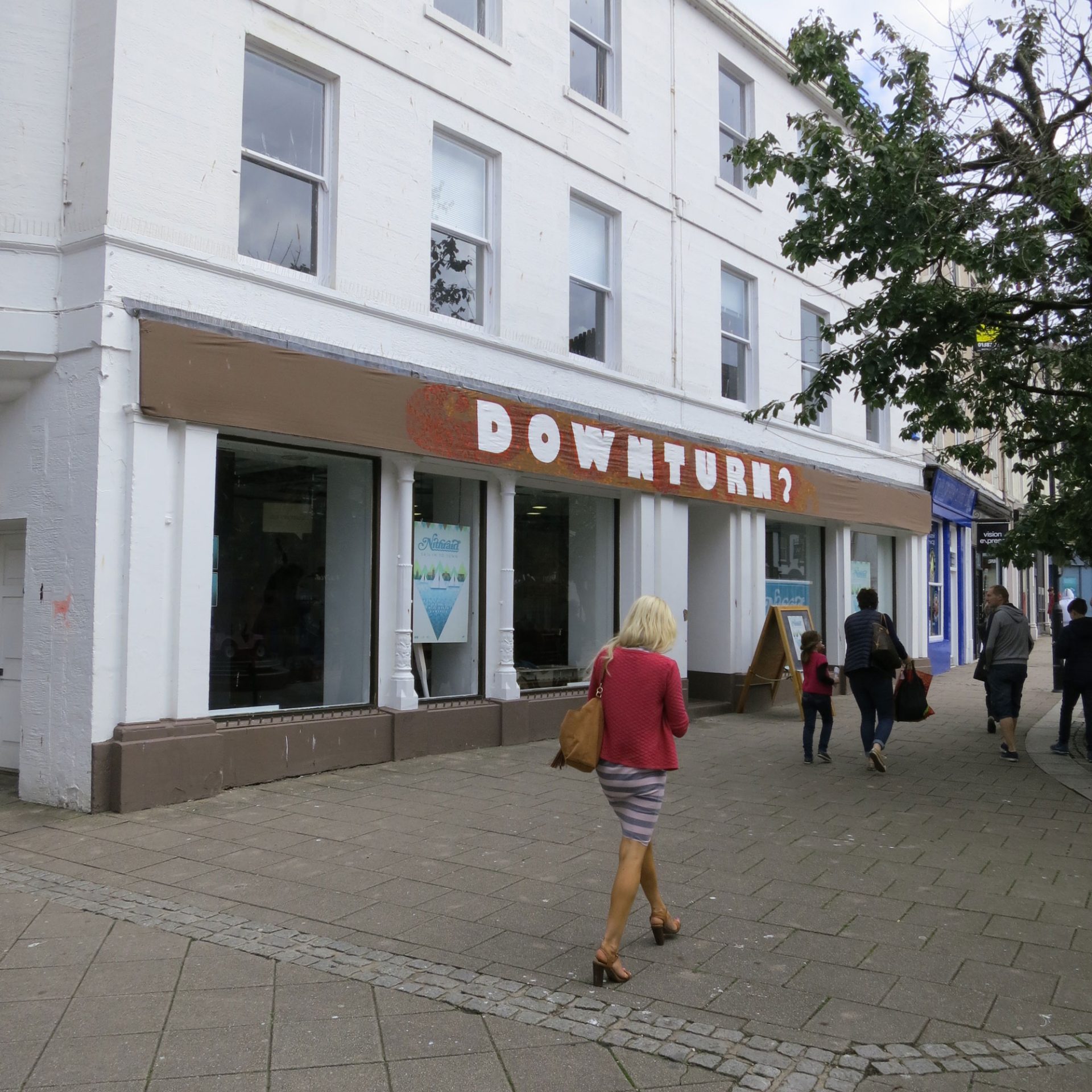We asked ourselves a question: “Can a sign above a High Street building ever do anything other than promote and brand? Can it ask questions, be part of a conversation with other signs… Can our High Street ever become a space that prioritises people as well as sales?”

Whose downturn is this?
As a species, we show ourselves to be resilient and endlessly adaptable, but what true opportunities exist between the moss and the ‘for sale’ signs? How do we reimagine the spaces between the High Streets we remember and what remains when our High Street no longer meets the bottom line of the multinationals?
Our town centres have grown out of a need to gather, connect, meet, barter, and exchange. Dumfries owes its place to the river, the cattle marts, and the passage of people. Yet, from our largely rural context, Dumfries has also served as a gathering point—a melting pot where communities meet and exchange not just economically but socially, forming our connection to the wider world.
‘A marketplace (rather than a “market”) is a sociable space where buying and selling take place surrounded by other activities—a place to see friends, hear stories, and argue about ideas. Crucially, unlike a Starbucks or a department store, it is a space where your welcome is not determined purely by your ability to spend money.’*
Dumfries stands at a crossroads, questioning its identity and place within the world. While Primark may not have arrived, there is an air of anticipation and change quietly murmuring amongst a growing number of the town’s communities. Now is the time to search for the new role we can play in shaping the future of Dumfries—to reach out for a possible, renewed Dumfries.
Dumfries is not dead, merely sleeping. Hidden Dumfries lies in plain sight, behind the sagging bus stances and solitary street furniture.
Now is the time to act.

How do we judge what a downturn is anyways?
This action does not require grand master planners or large-scale redevelopment, but rather a little collective energy and small, positive acts. Testing and experimentation, problem-solving, and lightweight interventions can pave the way towards a more active High Street, and a more vibrant town centre. Small actions can highlight, question, explore, and initiate discussion, growing from an inquisitive response to our everyday surroundings.
This is a call for new distractions.
Can we create a new visual language for our High Streets?
*Dougald Hine, Space Makers, quoted in How to Save Our Town Centres, by Julian Dobson.


